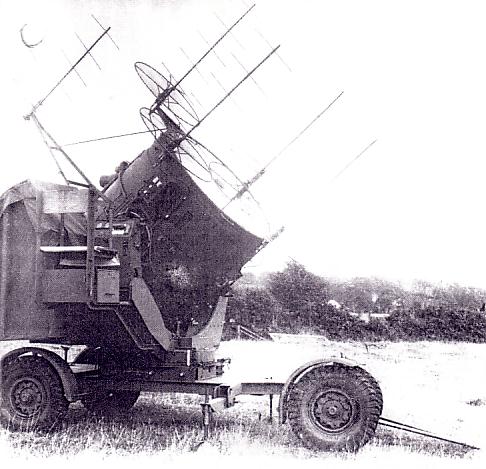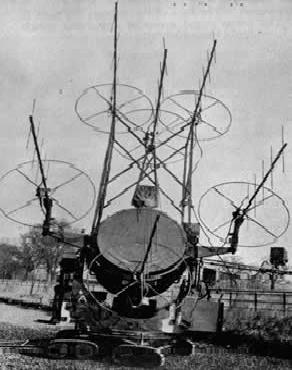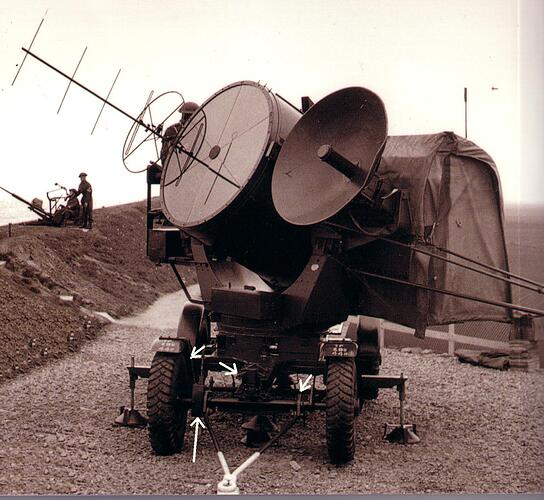I believe the Scharnhorst was crippled by radar-aimed gunnery from HMS Belfast, before being sunk by torpedo. I am unsure as to whether the other RN ships had this capability. Nearly 2,000 men were lost with the Scharnhorst.
Yes the RN had radar controlled gunnery, by 1943 most Allied capital ships had it. I belive the German ships in 1940 carried the Seetakt radar. In keeping with theres a website for everything have a look at this:
The Germans had naval fire control radar and surface search radar (Freya was used on shore to look for ships at sea) well before the allies (Britain had, of course, dedicated her research to using radar to find planes). One theory for the Graf Spee scuttling herself at River Plate was so the British wouldn’t capture her and get the radar for themselve.
How about Sonar? I think we would still be on topic:
Sonar or Asdic (Anti-Submarine Detection Investigation Commitee) was a British invention and was thought up around WW1 but only was possible and installed in 1941. These sonars had a beam that would search the waters, targets that fell into the search of the beam refelected a ping. They could then calculate the targets range based on the amount of time the ping bounced back.
These early sonars where very basic and had allot of problems. But they steadily advanced during the years.
What ASDIC did was combine an omnidirectional source of sound, the echoes of which were easily audible, with a normal hydrophone (a unidirectional underwater microphone). By pinging & listening to the hydrophone, range and bearing could be plotted.
Prior to WW2, all European powers were working on Radar, though the British were the most advanced. The big British invention was the magnetron, invented by Sir Dr. Watson-Watt, which enabled high power microwave pulses. The British were usualy one one decimal point ahead of the Germans, being able to use shorter wave lengths (e.g. the Germans used radio waves of a wave length of one meter, the British could use 0.10 meters). The shorter wave lengths greatly increased the resolution of the radar systems and also made the radar units less bulky, though then they were strictly line of sight. The older long wave radar sets of the Chain home stations were used for long range detection (because they could look over the horizon, even though their resolution was not too good, and the VHF radar was then used to pinpoint the targets and guide the fighters).
Jan
I didn’t think the !940’s had radar back then, i knew the German detection technology was incredibly advanced but i was quite convinced they didn’t have Radar detection units.
The Brits were light years ahead of the Germans in radar technology - it was this which allowed us to win the Battle of Britain.
Even the “cats eyes Cunningham” myth was propaganda to hide the fact that we had airbourne radar in our night fighters.
I dont think it was the fact that the brits were light years ahead that was decisive in BoB. The fact that the Brits tied all the radar and observer resources into a manageable systed was decisive though, the radar and observers would feed all their information into the Sector Stations, which would compile and feed all the data up to group. The command and control element was the main factor in winning the battle as it enabled the Brits to have just enough aircraft in the air to counter German attacks instead of having to rely on standing patrols.
 Not light years mate
Not light years mate 
Freya radars:
Quoted from:
http://www.answers.com/main/ntquery;jsessionid=3ibutqrmsft4k?method=4&dsid=2222&dekey=Freya+radar&gwp=8&curtab=2222_1&sbid=lc02a&linktext=Freya%20radar
Freya radar was an early form of radar deployed by Nazi Germany during World War II, named after the Norse Goddess Freya. During the war over a thousand stations were built.
First tests of what would become the “Freya” early warning radar were conducted in early 1937, with initial delivery of an operational radar to the Kriegsmarine in 1938. It appeared to received a much lower priority than British radar until later in the war. The Freya radar was in fact much more sophisticated than the British Chain Home (CH) counterpart, and by operating in the 1.2 m wavelength (as opposed to ten times that for the CH) the Freya was able to be much smaller and yet offer better resolution. Yet by the start of the war only eight of these units were in operation, offering much less coverage.
Later in the war Freya operated in the band from 2.5 to 2.3 meters / 120 to 130 MHz, with a pulse width of 3 microseconds, a peak power output of 15 to 20 kW, and a PRF of 500 Hz. However it had a maximum range of only 160 kilometers (100 miles) and could not accurately determine altitude, making it inferior to CH in those respects, but it was a fully steerable and a mobile system.
My emboldment.

Freya radar from http://www.radarworld.org/
Being able to accurately determine altitude is quite an important thing for a radar to do 
Agree! 
No thats incorrect information Mate, they were infact behind the german techonology, until after the War.
No thats incorrect information Mate, they were infact behind the german techonology, until after the War.[/quote]
Britain had better air detection radar.
Germany concentrated on surface search radar for ships to find other ships, which was why the British sent divers down to the Graf Spee after she scuttled at River Plate - to try and get the radar.
That’s the way I always understood it anyway?
The Brit radars couldnt detect height either. Thats what the observer Corp were there for in 1940.
Hope that it’s not off-topic:
German radar stations in Europe:
http://www.gyges.dk/Flum%20and%20Jagd.htm
While Radar is not my thing Anti Aircraft is. The development of Radar was being done well before the war and we had basically two types Chain Home High and Chain Home Low. Chain Home High had a range out to approximately 60 to 70 miles but due to ground clutter was not able to detect low flying aircraft hence Chain Home Low much had a much shorter range but could. Both required one antenna to transmit and a different to receive and this was not to change until close to the end of the war.
All the Chain Home Radars during the Battle of Britain only pointed out to sea and this is the main reason why we had the Observer Corps, once an enemy plain crossed the coast it was lost on radar. For night engagements the Ack Ack guns and night fighters relied on the Searchlights guided by sound detectors. As gun laying radars improved they became less reliant on searchlights but the same can’t be said about night fighters. As radar technology improved 1941 we had developed a radar guided searchlight called an SLC or Elsie as it was called.
With out getting to technical the frequency ranges were such that the Radar in the night fighter was useless when it was within 3 miles of its target. Hence the Searchlight with a beam range of 5 miles could pin point the target with its radar and then illuminated it for the night fighter. I hope this helps


Hi guys,
where did you get these ideas? Radar (though not yet called radar by that time) was invented and patented by Christian Hülsmeyer as early as 1904. US and British developments up to and throughout WW2 were based on discoveries and inventions from Hans Hollmann who conducted all groundbreaking research on microwaves. The British however put much more effort in installing a working air detection network prior to the war, though it was inferior from a strictly technological point of view.
Developed and “light year ahead” are not the same as invented. The basis of modern computing and computers come from various places. Yet it was the Americans that really DEVELOPED the computer as we know it today.
Ok, I had misunderstood the “develop” part from your post as original invention.
 Of course did GB develop Radarsets of all kinds. Light years ahead is still wrong though. A funny anecdote about the electronic war is that the germans sent a zeppelin with measuring equipment to check out whether those towers from Chain Home were Radarsets or not and figured they weren’t because they couldn’t detect any transmission. This was because Chain Home (High) worked in the Radioband which they didn’t measure cause they considered such bandwidth unsuitable for the task (Which is both right and wrong. It is completely unsuitable for what we understand as radar today yet it served exactly the purpose the british intended, to give them early warning). So the fact that used inferior system at the beginning of hostilities saved them possibly some trouble later in the BoB.
Of course did GB develop Radarsets of all kinds. Light years ahead is still wrong though. A funny anecdote about the electronic war is that the germans sent a zeppelin with measuring equipment to check out whether those towers from Chain Home were Radarsets or not and figured they weren’t because they couldn’t detect any transmission. This was because Chain Home (High) worked in the Radioband which they didn’t measure cause they considered such bandwidth unsuitable for the task (Which is both right and wrong. It is completely unsuitable for what we understand as radar today yet it served exactly the purpose the british intended, to give them early warning). So the fact that used inferior system at the beginning of hostilities saved them possibly some trouble later in the BoB.

